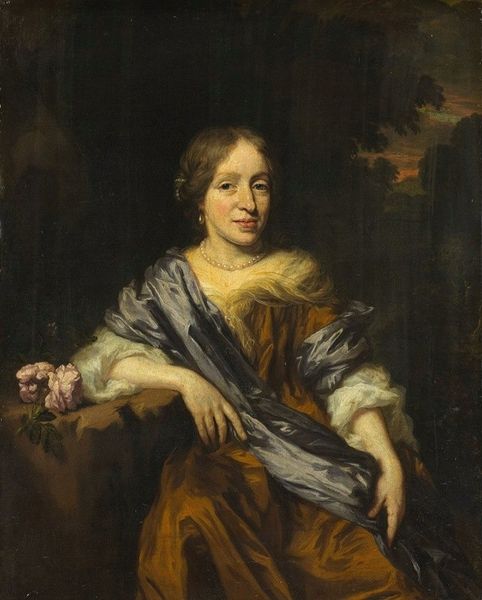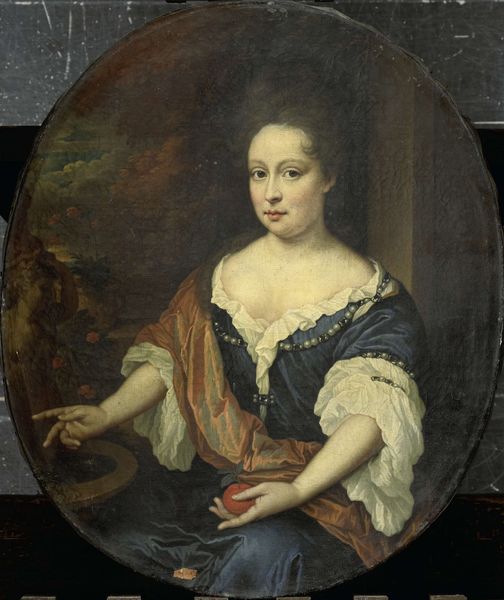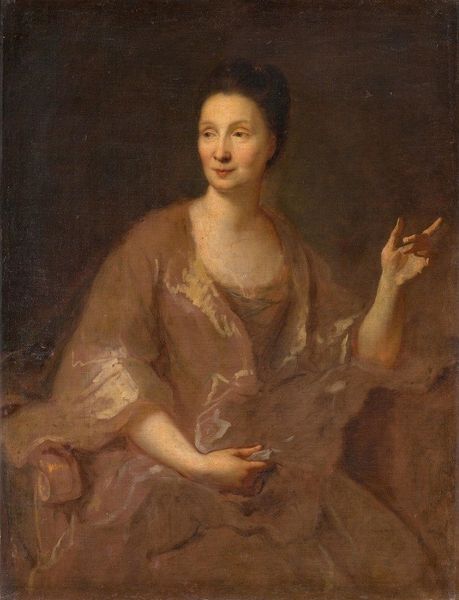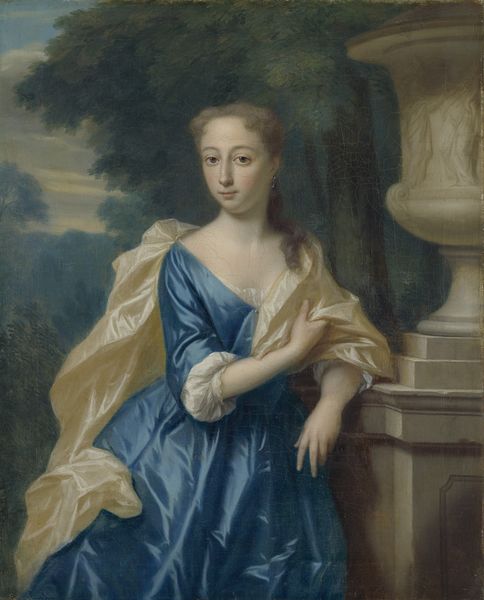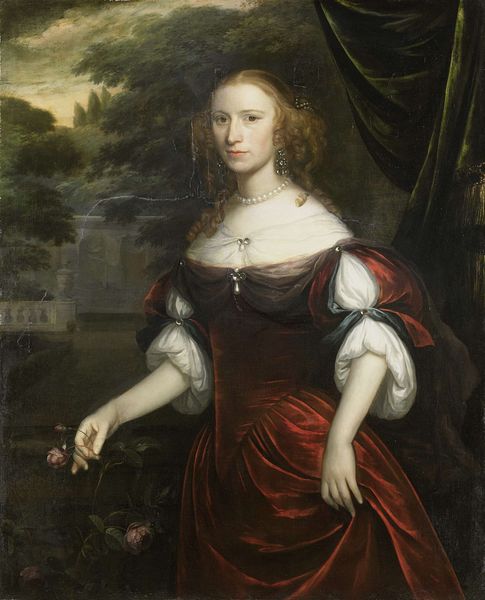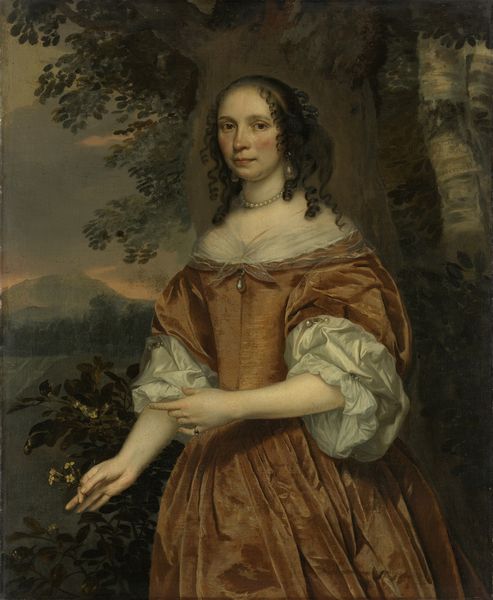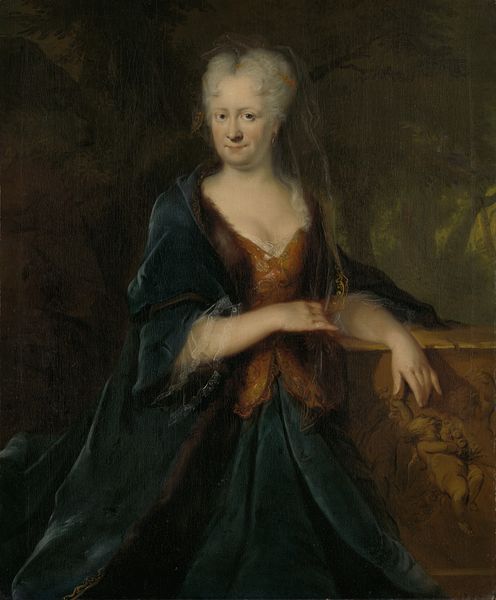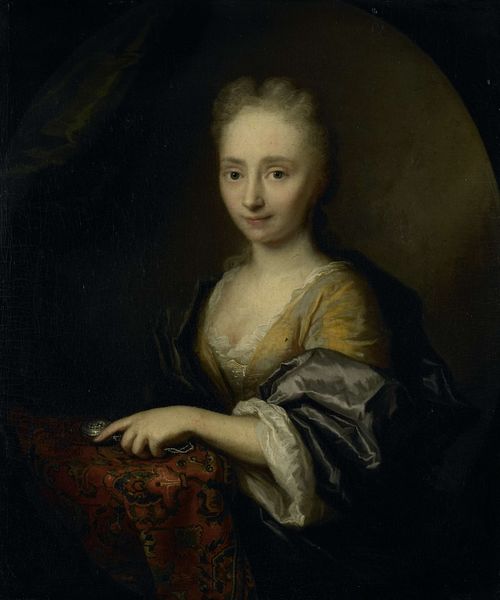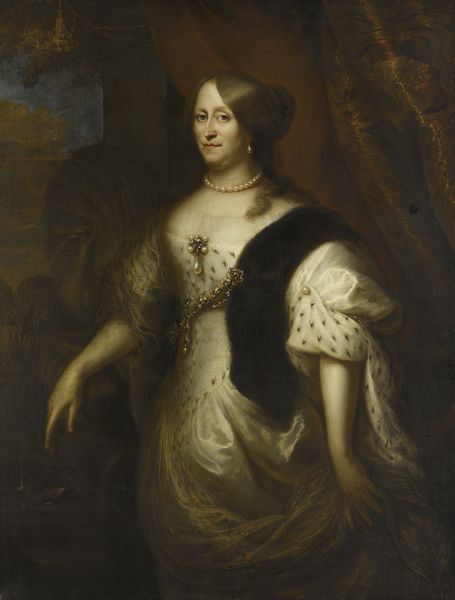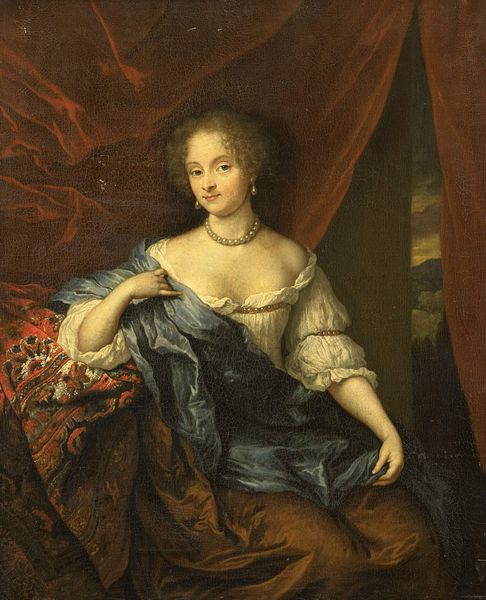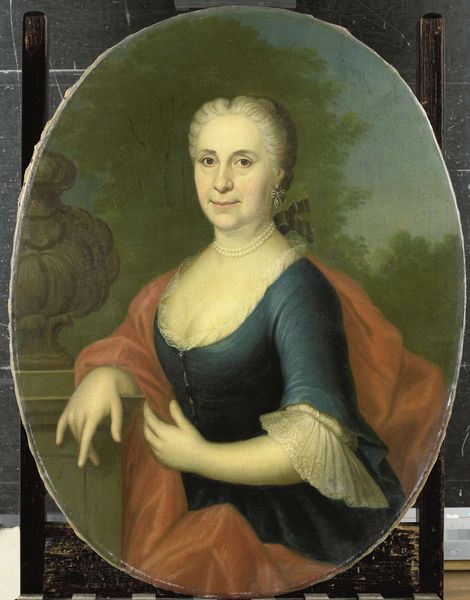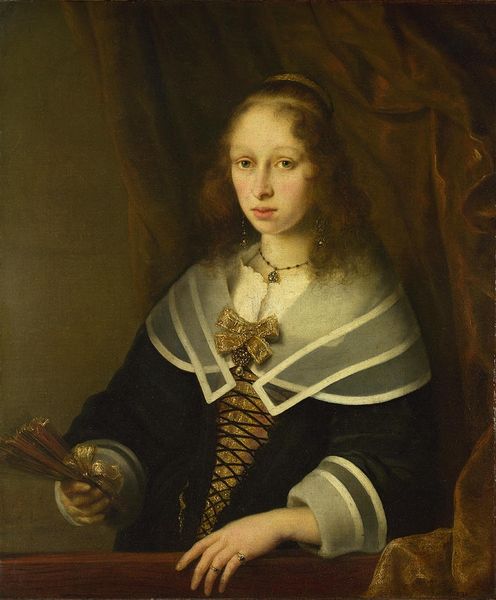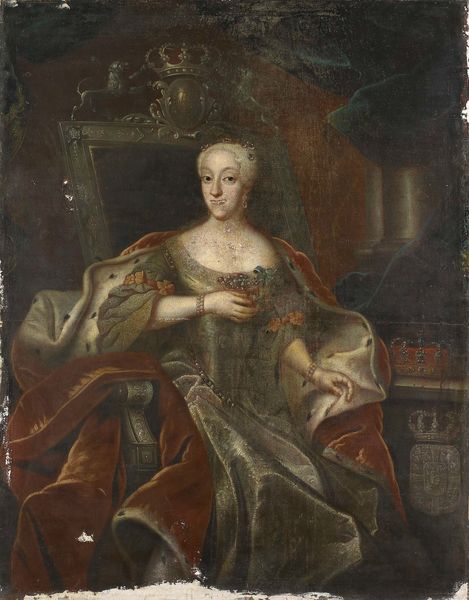
Portrait of Margaretha Nelis (1652-17050, second wife of Casparus Commelin 1693 - 1704
0:00
0:00
oil-paint
#
portrait
#
baroque
#
dutch-golden-age
#
oil-paint
#
oil painting
Dimensions: height 56.5 cm, width 48.5 cm, depth 4.5 cm
Copyright: Rijks Museum: Open Domain
Editor: So, here we have David van der Plas' "Portrait of Margaretha Nelis," painted sometime between 1693 and 1704. She looks quite serene, almost detached from the landscape behind her. How does this painting speak to the conventions of portraiture in its time? Curator: That's a keen observation about the separation between subject and landscape. These Dutch Golden Age portraits, while seemingly straightforward, are deeply embedded in social and cultural dynamics. Van der Plas wasn't simply painting a likeness; he was constructing an image of status and respectability for Margaretha Nelis. Consider the historical context: the Dutch Republic was a burgeoning economic power. What elements in this painting might allude to that? Editor: Well, her robe looks luxurious, and she has this...regal repose? Is it about showing wealth through stillness, somehow? Curator: Exactly. Leisure and elegance became visual markers of class. The controlled, almost austere palette, along with the subdued background landscape, moves away from overtly opulent displays towards a more internalized sense of worth, reflecting a shift in Dutch societal values where wealth was coupled with a sense of civic duty. Notice, however, the very faint figures behind her, do you see them? Editor: Yes! What does that background landscape evoke? Curator: The inclusion of such backgrounds was about conveying sophistication and possibly hinting at the sitter’s connection to land or a more cultivated existence, thus amplifying her perceived social standing. By showing her not as *nouveau riche*, van der Plas suggests that her class has always existed. This is no portrait for display; it's an exercise in historical painting, using visual codes to position its sitter within a larger narrative about gender and economic class. Editor: I never thought about it that way. It’s much more than just a portrait of a woman; it’s a statement about Dutch society at the time. Curator: Precisely. And that understanding helps us engage with art not just as aesthetic objects, but as cultural documents loaded with meaning.
Comments
No comments
Be the first to comment and join the conversation on the ultimate creative platform.
